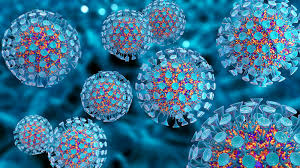Source: genengnews.com
Using genetic sequencing, scientists at the University of California, San Diego (UCSD), School of Medicine say they have identified a principal cellular player controlling HIV reproduction in immune cells which, when turned off or deleted, eliminates dormant HIV reservoirs.
“This is one of the key switches that the HIV field has been searching for three decades to find,” said Tariq Rana, PhD, professor of pediatrics and genetics at UCSD School of Medicine. “The most exciting part of this discovery has not been seen before. By genetically modifying a long noncoding RNA, we prevent HIV recurrence in T cells and microglia upon cessation of antiretroviral treatment, suggesting that we have a potential therapeutic target to eradicate HIV and AIDS.”
HIV spreads through certain bodily fluids attacking the immune system and preventing the body from fighting off infections. If left untreated, the virus leads to the disease AIDS.
Antiretroviral therapy is used to prevent and treat HIV. However, the medication does not cure patients. Instead, the virus remains inactive in the body. If therapy is discontinued, the virus awakens and multiplies rapidly.
In a study (“The Long Noncoding RNA HEAL Regulates HIV-1 Replication through Epigenetic Regulation of the HIV-1 Promoter”) published online in mBio, Rana and colleagues report the first genome-wide expression analysis of long noncoding RNA (lncRNA) in HIV-infected macrophages that promote tissue inflammation, stimulate the immune system, and rid the body of foreign debris. In general, lncRNAs do not encode the recipe for proteins the way other RNAs do, but instead help control which genes are turned “on” or “off” in a cell.
The team described how a single lncRNA dubbed HIV-1 Enchanced LncRNA (HEAL) is elevated in people with HIV. HEAL appears to be a recently emerged gene that regulates HIV replication in immune cells, such as macrophages, microglia, and T cells.
Using a combination of genomic, biochemical, and cellular approaches, they found that silencing HEAL or removing it with CRISPR-Cas9 prevented HIV from recurring when antiretroviral treatment was stopped. Additional research to confirm these effects in animal models will be performed.
“A major challenge in finding a cure for HIV-1/AIDS is the difficulty in identifying and eradicating persistent reservoirs of replication-competent provirus. Long noncoding RNAs (lncRNAs, >200 nucleotides) are increasingly recognized to play important roles in pathophysiology. Here, we report the first genome-wide expression analysis of lncRNAs in HIV-1-infected primary monocyte-derived macrophages (MDMs). We identified an lncRNA, which we named HIV-1-enhanced lncRNA (HEAL), that is upregulated by HIV-1 infection of MDMs, microglia, and T lymphocytes. Peripheral blood mononuclear cells of HIV-1-infected individuals show elevated levels of HEAL. Importantly, HEAL is a broad enhancer of multiple HIV-1 strains because depletion of HEAL inhibited X4, R5, and dual-tropic HIV replications and the inhibition was rescued by HEAL overexpression,” the investigators wrote.
“HEAL forms a complex with the RNA-binding protein FUS, which facilitates HIV replication through at least two mechanisms: (i) HEAL-FUS complex binds the HIV promoter and enhances recruitment of the histone acetyltransferase p300, which positively regulates HIV transcription by increasing histone H3K27 acetylation and P-TEFb enrichment on the HIV promoter, and (ii) HEAL-FUS complex is enriched at the promoter of the cyclindependent kinase 2 gene, CDK2, to enhance CDK2 expression. Notably, HEAL knockdown and knockout mediated by RNA interference (RNAi) and CRISPR-Cas9, respectively, prevent HIV-1 recrudescence in T cells and microglia upon cessation of azidothymidine treatment in vitro. Our results suggest that silencing of HEAL or perturbation of the HEAL-FUS ribonucleoprotein complex could provide a new epigenetic silencing strategy to eradicate viral reservoirs and effect a cure for HIV-1/AIDS.”
“Our results suggest that HEAL plays a critical role in HIV pathogenesis,” said Rana. “Further studies are needed to explain the mechanism that leads to HEAL expression after an individual is infected by HIV, but this finding could be exploited as a therapeutic target.”
